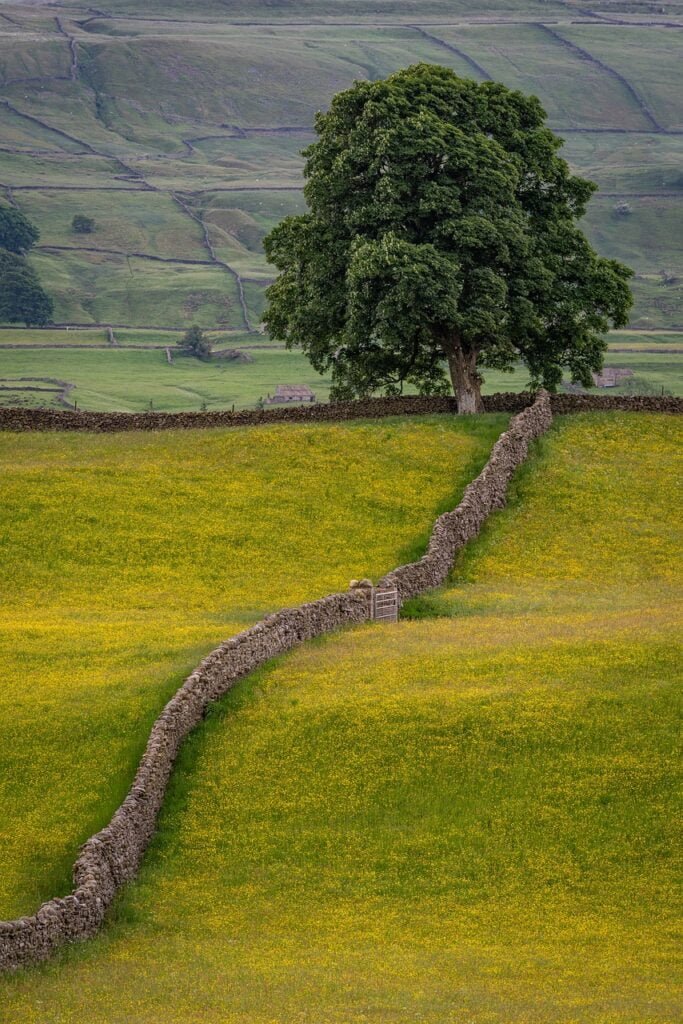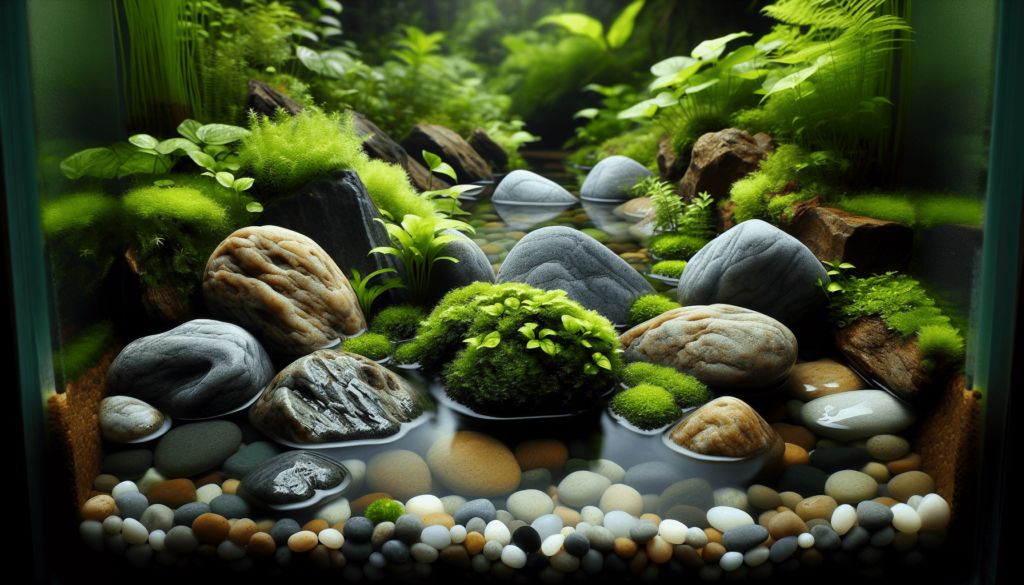When you start mastering aquascaping with Seiryu Stone, you enter the fascinating world of underwater gardening. Seiryu Stone, known for its striking blue-grey appearance, has a rich history in Japanese rock gardening and is now a favorite among aquarium lovers. This stone helps create stunning underwater landscapes, providing a playground for your fish and plants. With current trends leaning towards natural and serene aquarium designs, understanding how to use Seiryu Stone can transform your tank into a beautiful and harmonious environment. It’s like creating a tiny, magical world right in your home! Have you ever wondered how people create those beautiful underwater landscapes in fish tanks? It’s an exciting hobby called aquascaping! One of the most popular materials used in aquascaping is a special kind of rock called Seiryu stone. Let’s embark on a journey to discover how you can master the art of aquascaping using Seiryu stone and turn your aquarium into a stunning underwater paradise.
Overview: What is Aquascaping?
Aquascaping is like gardening under water. People design and arrange plants, rocks, and other objects in fish tanks to create beautiful, natural-looking scenes. It’s not just about making the tank look nice; it’s also about creating a good environment for the fish and plants to live in.
Thesis Statement: Why Seiryu Stone is Key to Mastering Aquascaping
Seiryu stone is a favorite among aquascapers because of its unique look and versatility. When you use Seiryu stone, you can create amazing underwater landscapes that mimic natural environments, making your tank a pleasure to look at and a healthy space for your fish.

Historical Context: The Origins of Aquascaping and Seiryu Stone
Aquascaping originated in Japan many years ago. People started designing underwater landscapes to bring a piece of nature into their homes. Originally, they used simple rocks and plants, but over time, they discovered that certain types of rocks, like Seiryu stone, worked best. Seiryu stone comes from Japan, making it a perfect fit for this art form that started there.
What Makes Seiryu Stone Special?
Seiryu stone is a type of limestone that has a striking blue-grey color and unique white veins running through it. Imagine a rock that looks like it has cracks of light running across its surface—that’s Seiryu stone! Its rough texture and interesting shapes make it ideal for creating realistic rock formations in aquariums.
Current Trends: The Popularity of Aquascaping Today
Nowadays, more and more people are getting into aquascaping. It’s become a popular hobby worldwide. Many aquascapers are sharing their creations on the internet, and there are even competitions for the best-designed tanks. The use of Seiryu stone has grown, too, because of its beauty and adaptability. People are always finding new and creative ways to use this fantastic stone in their aquascapes.

Key Concepts and Definitions
Before we dive deeper, let’s go over some important terms you’ll need to understand:
Aquascaping
Aquascaping is the craft of arranging aquatic plants, stones, and driftwood in an aquarium to create beautiful landscapes.
Seiryu Stone
Seiryu stone is a type of rock often used in aquascaping, known for its blue-grey color and white veins. It helps create natural-looking scenes in fish tanks.
Hardscape
In aquascaping, the hardscape refers to the non-living elements like rocks, stones, and driftwood. The hardscape forms the structure of the aquascape.
Substrate
The substrate is the material at the bottom of the aquarium, like gravel or sand, where plants can root and which helps with the overall look of the tank.
Detailed Exploration: Mastering Aquascaping with Seiryu Stone
Now that you know what aquascaping and Seiryu stone are, let’s dive into the details of how you can use this rock to create your aquatic masterpiece.
Step 1: Planning Your Aquascape
Every great project starts with a plan. Here’s a checklist to help you plan your aquascape:
- Design Theme: Decide what kind of scene you want. Do you want a mountainous landscape, a flowing riverbed, or a simple rock garden?
- Tank Size: The size of your aquarium will influence your design choices.
- Materials: List all the materials you’ll need, including Seiryu stones, plants, substrate, and any other decorations.
- Drawing: Sketch a simple drawing of how you want your tank to look. This helps visualize your final design.
Step 2: Preparing Seiryu Stone
Once you have a plan, it’s time to prepare your Seiryu stone. Here’s what you should do:
- Clean the Stones: Wash the Seiryu stones thoroughly to remove any dirt or debris.
- Break Them If Needed: If the stones are too large, you can carefully break them into smaller pieces using a hammer.
- Positioning: Play around with the stones outside the tank first to find the best arrangement before placing them inside.
Step 3: Setting Up the Hardscape
The hardscape is the backbone of your aquascape. Here’s how you set it up:
- Add Substrate: Start by adding a layer of substrate at the bottom of the tank.
- Place the Stones: Arrange the Seiryu stones according to your design plan. You can create cliffs, valleys, or any structure you like.
- Adjust Heights: Vary the height of the substrate to add more depth and dimension to your landscape.
Step 4: Adding Plants and Water
After setting up the hardscape, the next step is to add plants and water:
- Choose Plants: Select aquatic plants that fit your design. You can opt for tall plants for the background and shorter ones for the front.
- Planting: Carefully plant the aquatic plants in the substrate around the Seiryu stones.
- Adding Water: Slowly fill the tank with water to avoid disturbing the substrate and plants.
Step 5: Maintaining Your Aquascape
Maintaining your aquascape is crucial for keeping it beautiful and healthy:
- Water Parameters: Regularly check the water parameters like pH, hardness, and temperature.
- Trimming Plants: Trim the plants regularly to keep them from overgrowing and maintain the design.
- Cleaning: Clean the aquarium glass and change some of the water regularly to prevent algae buildup.

Example 1: The ‘Iwagumi’ Style Aquascape
One popular style of aquascaping using Seiryu stone is called ‘Iwagumi’. This style mimics mountainous landscapes and usually features a few carefully placed stones and minimalistic plant coverage.
Steps to Create an Iwagumi Aquascape:
- Select a Focal Stone: Choose one large Seiryu stone as the main focus.
- Position Smaller Stones: Arrange smaller stones around the focal stone to create a natural look.
- Plant Selection: Use low-growing plants like grass to keep the focus on the stones.
Example 2: The Riverbed Aquascape
Another stunning aquascape you can create with Seiryu stone is a riverbed style. This mimics the look of a slow-flowing river with plants and rocks.
Steps to Create a Riverbed Aquascape:
- Line the Bottom with Seiryu Stones: Arrange Seiryu stones at the bottom to create the appearance of a riverbed.
- Add Fine Substrate: Use sand or fine gravel to mimic a natural riverbed.
- Place Plants: Use plants that thrive in flowing water, like ferns and mosses.

Comparison of Different Perspectives: Embracing Various Aquascaping Styles
There are many ways to approach aquascaping with Seiryu stone, each offering a different aesthetic. Some aquascapers prefer minimalist styles like Iwagumi, focusing on the elegance of the stones, while others enjoy more intricate designs with lots of plants and decorations.
Minimalist vs. Intricate Designs
| Style | Characteristics | Pros | Cons |
|---|---|---|---|
| Minimalist | Few stones, minimal plants, focus on simplicity. | Elegant, easy to maintain. | Less variety, may look too simple. |
| Intricate | Many stones, varied plants, more complex layouts. | Rich in detail, diverse appearances. | Requires more maintenance, complex. |
Impact Assessment: Evaluating Aquascaping Styles
Understanding the impact of different aquascaping styles helps you choose the best approach for your tank.
Minimalist Impact
The minimalist design focuses on simplicity and elegance. It’s easy to maintain and allows you to highlight the natural beauty of Seiryu stone.
Intricate Design Impact
An intricate design offers more visual interest with a variety of plants and rocks. It can be more labor-intensive but provides a dynamic and vibrant aquascape.

Future Directions and Implications
As aquascaping continues to grow in popularity, new techniques and materials will emerge, but the fundamental principles will likely stay the same.
Predictions
- Innovative Materials: New types of rocks and substrates will be developed.
- Advanced Techniques: With new tools and methods, aquascaping designs will become even more creative.
- Global Trends: Aquascaping will become more popular worldwide, not just in Japan and Europe.
Implications
The rise of aquascaping has broader implications for both hobbyists and the environment. Increased interest in natural designs can foster a greater appreciation for aquatic ecosystems and the importance of preserving natural habitats.
Conclusion
Recap
Seiryu stone is a fantastic material for aquascaping, offering beauty and versatility. You’ve learned about the history of aquascaping, why Seiryu stone is special, and how to create stunning designs using this stone.
Final Thought
Imagine the joy of looking at your own beautiful underwater garden, knowing you created a perfect habitat for your fish and plants. Why not start planning your aquascape today?
Engagement
What kind of aquascape will you create with Seiryu stone? Share your ideas and designs in the comments below, and don’t forget to explore more resources to help you on your aquascaping journey!
Credible Sources
- Amano, Takashi. “Nature Aquarium: Complete Works 1985-2009.” T.F.H. Publications, 2009.
- Kasselmann, Christel. “Aquarium Plants.” Krieger Publishing Company, 2003.
- International Aquatic Plants Layout Contest (IAPLC) official website: http://en.iaplc.com
- Barr, Tom. “The Barr Report: Freshwater Aquarium Plants and Maintenance.” http://www.barrreport.com



